Dryer booster fans are freely available from most hardware supply stores and they are designed to augment the airflow efficiency in a dryer duct system. This all sounds great, except that booster fans are against building codes.
There is good reason for prohibiting booster fans in dryer ductwork; reasons linked to the safety and health of the houses’ occupants.

Dryer booster fans help expel air, moisture, and lint through long ducts. But they may fail without detection, creating the risk of moisture damage, mold, and lint fires. Lint can accumulate on the fan, increasing fire risk or causing it to fail. Booster fans aren’t permitted by the IRC for these reasons.
What Do Dryer Booster Fans Do?
A flow-through booster fan is typically installed at a certain point in the dryer’s exhaust ducting to “boost” the airflow through a duct.
They are installed when the dryer does not expel the air with sufficient force to ensure the hot air, moisture, and lint is expelled out of the duct.
Insufficient airflow through the duct will result in excessive moisture and lint settling inside it, where it will gather and pose a safety risk.
Booster fans can reduce the risk of insufficient exhaust duct airflow and the associated problems.
So, on the face of it, these devices seem like they are beneficial, but there are certain safety concerns linked to their use and these are likely the reasons why the IRC has prohibited them from being installed in residential dryer ducts.
Safety Concerns with Booster Fans
You Won’t Realize That They Have Failed
When you rely on a booster fan to effectively vent your dryer, then if this fan fails, you suffer the effects of insufficient exhausting of dryer air.
If you know your booster fan has failed, then you can simply avoid using the dryer until it’s repaired or replaced. However, there is a chance, particularly with older models, that you will not notice that the fan has stopped working until you see the negative consequences.
Furthermore, when the booster fan fails, the fan itself can become an obstruction in the duct, making airflow even more inefficient.
The following are some of the consequences of a failed booster fan.
Leaking Near Plug Point
Dryers give off a lot of moisture during the drying process. Moisture collects inside the duct when the airflow is insufficient to expel the moist air and lint. The moisture accumulates in any low-lying areas of the duct and can leak out.
Water dripping from a duct could easily find its way into an electrical plug point. A significant risk of electrocution exists if anyone comes into contact with the electrically charged water.
Slip Hazard
Water dripping out of a dryer duct can form a water puddle anywhere under the duct. The water can also run back along the duct into the dryer, which will find its way onto the floor.
An unsuspecting person walking into the puddle can easily slip and fall, causing potentially serious injury.
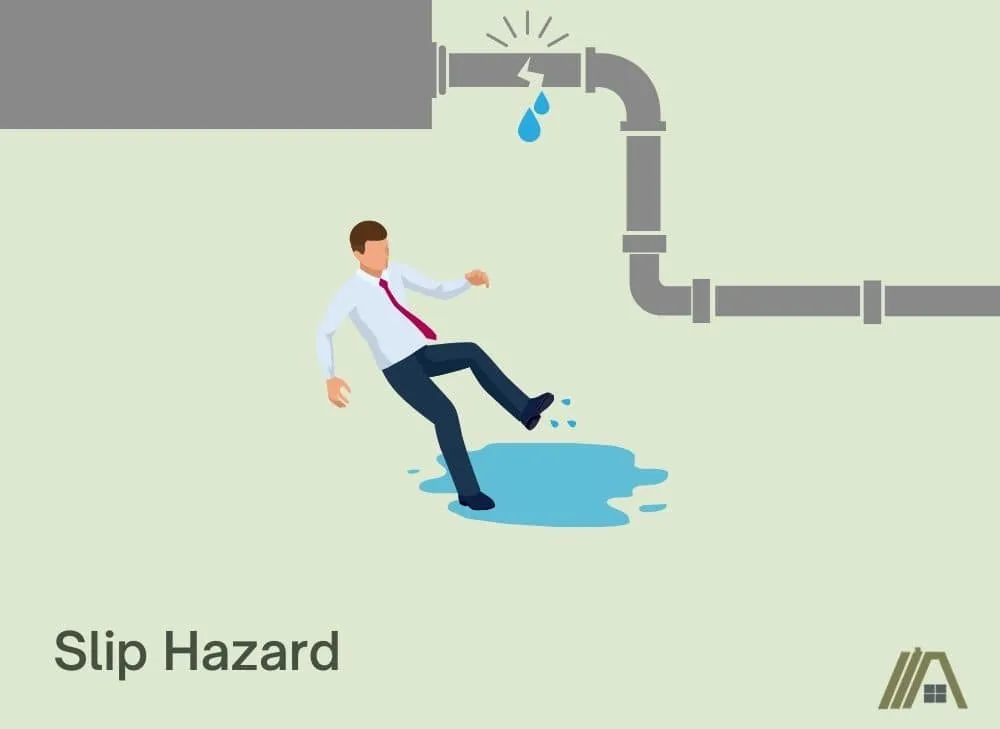
Structural Damage
A hidden water leak stemming from a dripping dryer duct can cause significant damage to floors, walls, and ceilings. Water can penetrate and damage a lot of materials.
Given enough time, wood exposed to water will start decomposing. Drywalling is also no match against consistent moisture exposure and will swell and collapse. Cement walls and even unsealed tiled areas will eventually degrade and need to be repaired or replaced.
If the leak goes unnoticed and is left unattended for long enough, the result can be catastrophic. Walls can become structurally compromised, making them unsafe. Ceilings can cave in, and wooden flooring can collapse or be permanently damaged.
Mold Growth
Mold grows particularly well in warm, moist, and dark conditions like those found inside dryer ducts that cannot move air properly. Lint and moisture that accumulates inside the dryer ducts due to insufficient airflow create the perfect conditions for mold growth.
When moisture and lint collect inside the duct, they form a wet blanket-like coating that retains moisture very well. Mold quickly develops on this layer and thrives for as long as the growing conditions are favorable.
Mold can, of course, also grow in any area of the home, such as walls, floors, inside cupboards, and ceilings. As long as moisture is present, mold is likely to set in. Once it starts growing in one spot, spores are released and carried to other spots, and this is how your moldy ducts can lead to a moldy house.
Fire Risk
The risk of a dryer fire occurring increases significantly when a booster fan malfunctions. Lint given off by the clothes during the drying process cannot escape the dryer duct as quickly as it should, and it accumulates in these tubes that are consistently exposed to high temperatures.
The accumulation further restricts airflow, worsening the accumulation of lint and creating a pressure build-up inside the dryer and the duct.
When the air can’t escape freely, the lint, moisture, and hot air build up inside the dryer and are expelled through any tiny crevice it can find. More often than not, the lint settles on the electrical components of the dryer.
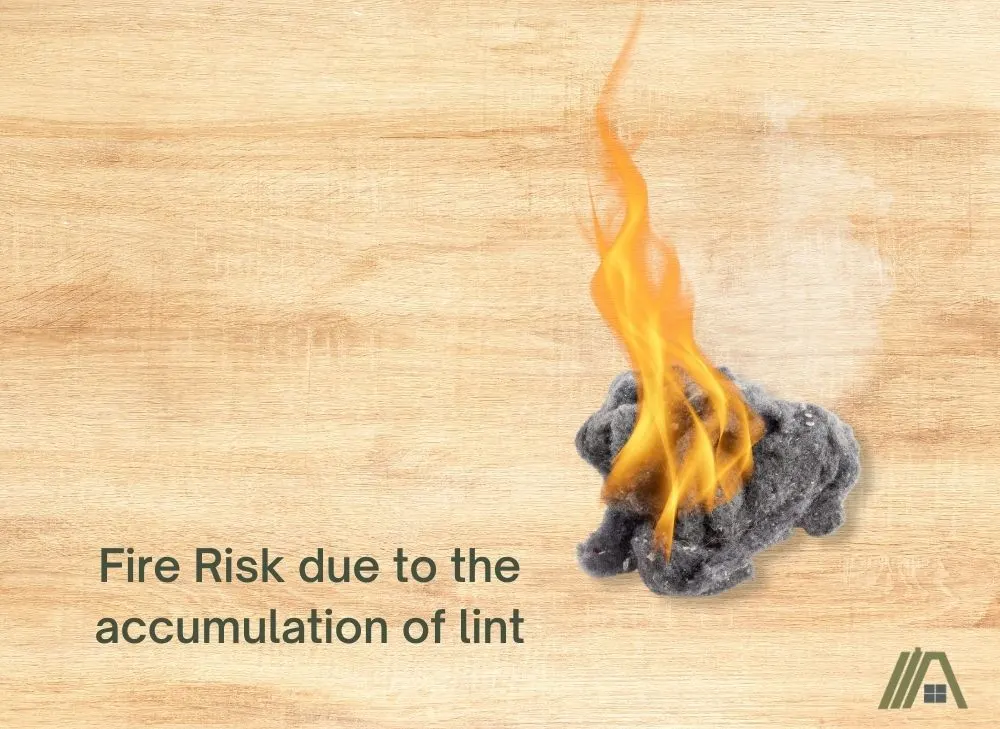
These components include the heating element and other parts that rely on air circulation to cool down. When sufficient lint blankets these parts, they can overheat and, in some cases, ignite the highly flammable lint, with disastrous consequences.
Should a fire start, a booster fan can draw the fire into the duct igniting the lint inside the duct, exacerbating the situation and spreading the fire throughout the house (this is why you have to use the correct dryer ducting materials!).
Another Surface on Which Lint Can Accumulate
Whether broken or functioning, a booster fan is another surface on which lint can accumulate, leading to all the fire-related consequences that we have just gone over.
But in addition to this, accumulating lint can actually be what compromises the functioning of the booster fan over time. These fine particles catch on the fan’s blades, causing them to jam, or they can get into the motor, reduce its efficiency, and increase its operating temperature, even to the point of failure.
In extreme cases, clumps of compacted lint could be dislodged from the duct walls and become stuck in the fan blades. When the booster fan no longer works as it should, the system becomes inefficient and very quickly becomes a significant fire risk.
Dryer Booster Fans Are Against IRC
The International Residential Code (IRC) guides the regulations for safety in homes. In Section M1502.4.5 it states that:
“Domestic booster fans shall not be installed in dryer exhaust systems.”
So, this means that no, generally, booster fans are not legal. However, this may be different according to local codes, and it depends on what you are looking at as a booster.
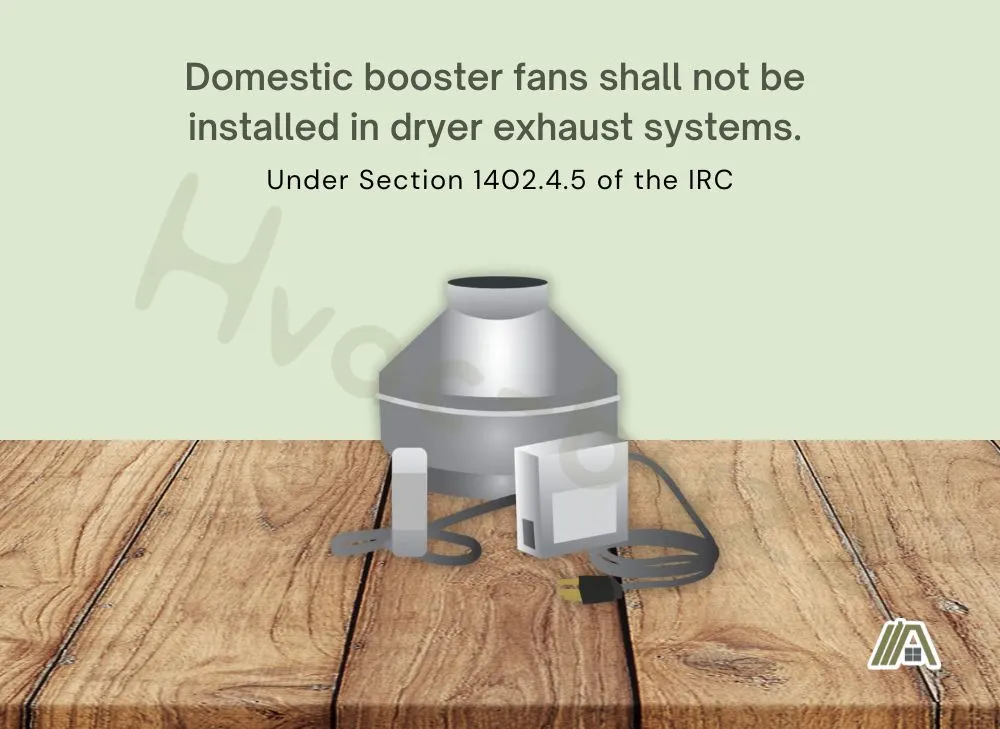
Some Local Codes Allow Booster Fans
It is always important to look at your local codes. The IRC gives the basic universal safety standards for America, but the local codes are the modified version specifically dedicated to the circumstances of your state or district.
It is also crucial to understand what your local codes are saying. For example, this source for California may appear to be allowing booster fans because it uses the two terms interchangeably. However, if you look a little closer, the source indicates that it uses the term “booster fan” to refer to an exhaust duct power ventilator.
It also specifies that these “booster fans” are only allowed if they meet the exception criteria. The exception requires the booster to be listed and labeled according to the UL 705 and that you must adhere to manufacturer installation instructions.
Power Ventilators vs Booster Fans
The source above uses the terms booster fan and power ventilator interchangeably. Yet, in Section M1502.4.4 of the IRC, dryer exhaust duct power ventilators (DEDPVs) are allowed.
The prohibition of booster fans is listed in the IRC in blue, meaning it is a recent addition to the code. It’s possible the terms are synonymous, and the IRC compliers made an error in not removing the section on DEDPVs. However, I suspect this isn’t so and is instead the result of slightly confusing terminology in the source.
As I mentioned, the source specifies what is meant by “booster fan” and looks at what is allowed in terms of such a device. An exhaust duct ventilator does, in fact, boost the exhaust power, but calling it a booster fan is a little misguided since that can refer to unregulated devices as well.
So, what is the difference between a DEDPV and other booster fans? The difference is the UL 705 listing of the DEDPVs, which has approval for the safety standards of the IRC.
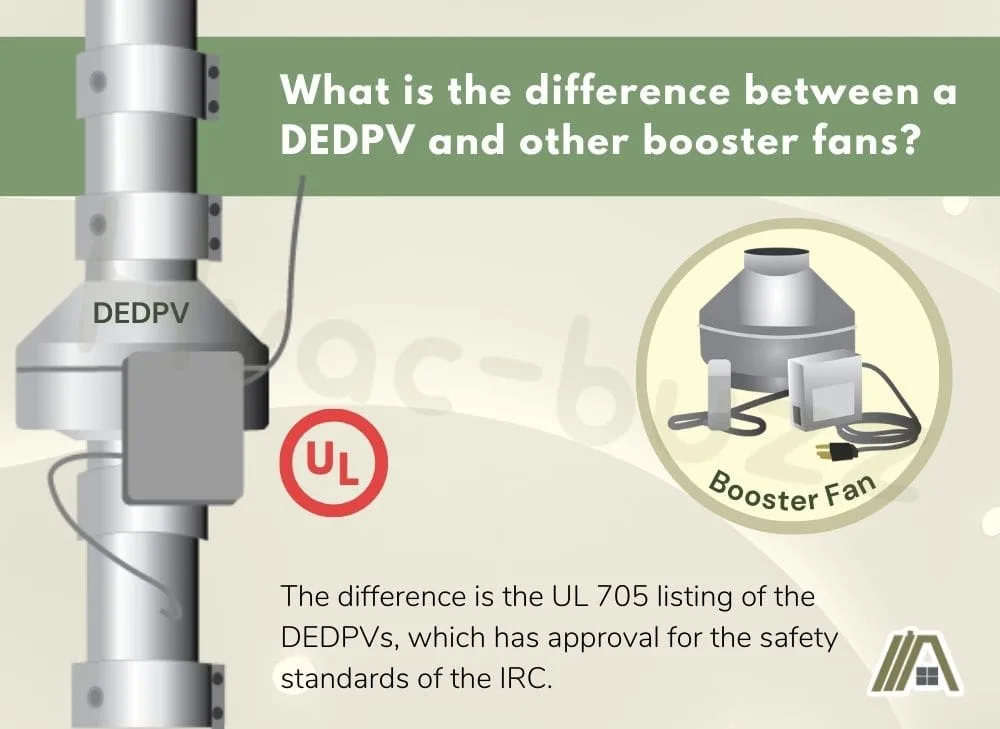
The Underwriters Laboratories (UL) listing on DEDPVs means they have been tested for functionality, safety features and requirements, correct airflow for lint, and the ability to maintain them properly. DEDPVs are, therefore, boosters that are proven to be safe and appropriate for assisting in dryer exhaust systems.
Why Are Booster Fans Prohibited?
Booster fans are intended to boost the airflow through your dryer exhaust vent to combat the difficulties associated with longer vents. Those difficulties are decreased appliance efficiency, longer drying times, and lint buildup.
The prohibition of booster fans seems to be attributed to safety regarding the appliance. It is dangerous if you have an unnoticed failure, if lint can catch on the extra surfaces, and if the ducts are too long.
If the booster fails, your dryer is no longer being appropriately ventilated, which is critical for dryers to operate safely (unless they are ventless). The result of this with a gas-powered dryer would be particularly insidious, as the harmful by-product carbon monoxide will not be exhausted properly.
Heat and lint can build in the ducting if the booster fails, resulting in a major fire hazard since dryer heat is often the source of lint ignition. In addition, lint buildup can cause blockages in the vents, also causing heat to build in the ducts.
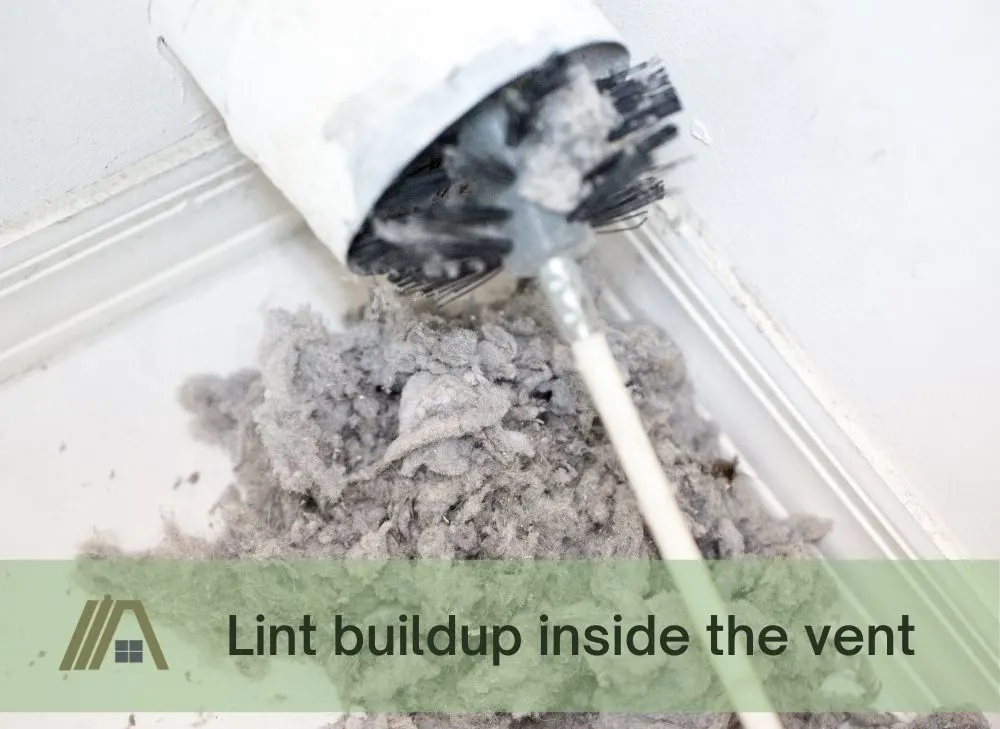
Lint can also gather because the fan is another surface to catch on. It is dangerous whenever there is a buildup of lint, especially if you are not regularly cleaning the fan as well as the vent and because there is heat from the dryer.
Another reason that could be attributed to the trouble with booster fans is that they can be used to compensate for ducting that isn’t code compliant since they assist when you have long ductwork. However, there are limits to the allowable length of dryer ducting.
According to Section M1502.4.6.2 (IRC), you must adhere to the maximum duct length in the manufacturer’s instructions. However, Section M1502.4.6.1 indicates that the overall maximum duct length for any dryer is 35’ between the transition duct on the dryer to the output. Bends equate to a certain measure of straight length, so adding bends reduces the allowable length.
Are Codes Equivalent to Laws?
The IRC is intended as a model code based on trade professional expertise and practices amongst national and international trade committees and councils.
Essentially, this is the compilation of best conduct and safety practices from experts in the relevant fields, which is designed to be adopted by governments with appropriate amendments where necessary.
According to the International Code Council (ICC), their code is accepted in 49 states (not Wisconsin currently), the Virgin Islands, Guam, Puerto Rico, and the District of Columbia.
This means the organizations that approve of and conduct constructions, alterations, and installations in your home are guided by this code. These include contractors, plumbers, electricians, home inspectors, and municipalities where you get permits and approvals. Even insurance companies will use this as a standard for evaluating the validity of claims.
So, yes, the codes are equivalent to laws, provided you follow any local amendments, because the legal bodies
Sources
https://codes.iccsafe.org/public/document/yc7355qx…
https://global.ihs.com/doc_detail.cfm?document_name=UL%20705&item_s_key=00097203


